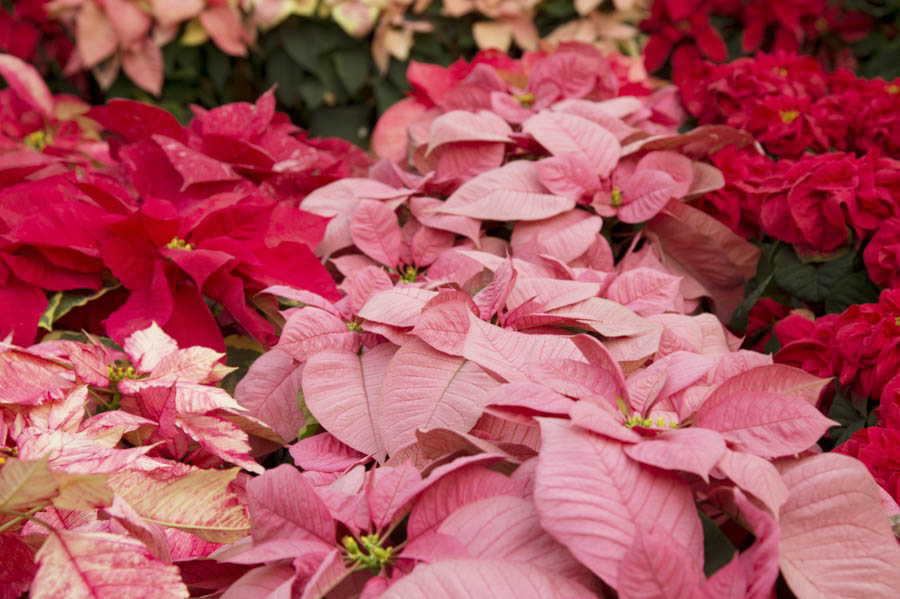Poinsettias: Tips, Care, and Fun Facts for the Holidays

What is the most popular holiday plant in the United States? The easy answer is Christmas trees for their traditional role as the holiday centerpiece, but by total annual sales of individual plants, the correct answer would be poinsettias. With sales in excess of 30 million plants annually, poinsettias are easily the most popular houseplant in the United States, outpacing sales of real Christmas trees by about 5 to 10 million plants per year.
Poinsettias (Euphorbia pulcherrima) are tropical plants native to Central America and Southern Mexico. They were introduced to the United States in the early 19th Century by the first US Minister to Mexico, Joel Roberts Poinsett and – an easy guess – Pointsett also provided their common name. In their native range, poinsettias are shrubs or trees that commonly reach several feet in height; some varieties may grow to 15 feet under ideal conditions.
The large colorful leaves of poinsettias are actually “bracts” or modified leaves that support insignificant true flowers. Pointsettia bracts come in many colors, from white to pink and yellow, and also in bicolored or marbled varieties, but with red as the traditional favorite.
The most common reasons that poinsettias decline or lose their colorful bracts over the holidays are warm or cold temperatures, drafty conditions, insufficient light, and too much or too little water. Poinsettias thrive at temperatures of 60 to 70 degrees Fahrenheit, and tend to decline and lose blooms and bracts at temperatures outside of this range. Exposing poinsettias to hot or cold temperatures for a short period, such as by leaving them in the car while doing holiday shopping, may harm their health or shorten bloom period. Poinsettias are so sensitive that they may be damaged by several minutes of exposure to temperatures below 50 degrees.
Poinsettias need at least 6 hours of daily light, either sunlight through a window or indoor fluorescent light, to stay healthy and maintain their colorful bracts for weeks over the holidays. Keep them away from warm, cold, or drafty areas, such as near fans, heaters, fireplaces, vents, air conditioners, open doors or windows, or closed windows during hot or cold weather. Like most houseplants, they prefer moist soil but suffer with too much watering or if kept for long in standing water.
Don’t know your GardenZeus climate zone? Click here.
This is an updated version of an article originally published on December 11, 2016.
Other articles with holiday interest:
Gifts for Gardeners: Essential and Deluxe Tools for the Home Garden
A Holiday Kiss Under the…Holly?: Mistletoe for The California Holidays, Part 1 of 3
A Holiday Kiss Under the…Tree-Killing Parasite?: Mistletoe for The California Holidays, Part 2 of 3